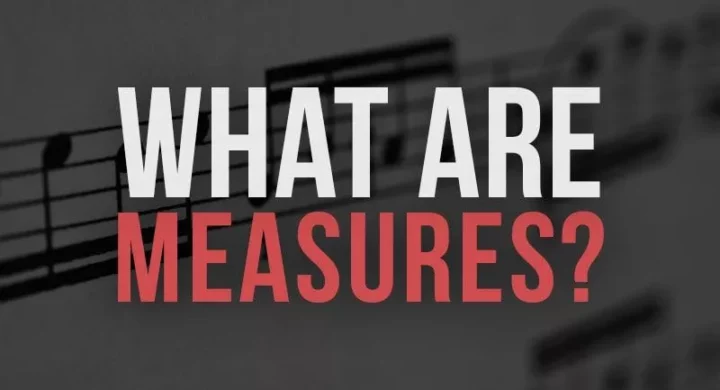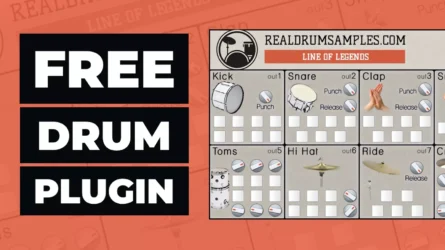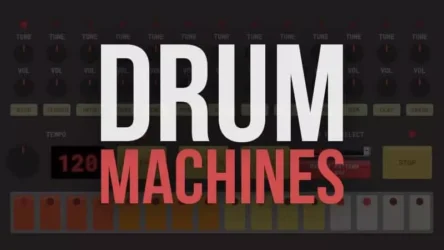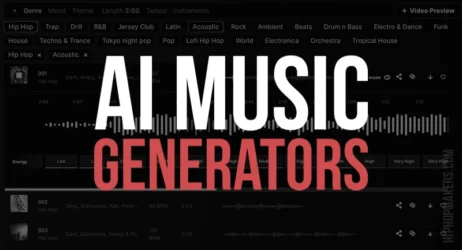You may have heard about the measure in music many times. But still, you aren’t quite sure what it actually means, right? Luckily, you are in the right place.
What Is A Measure in Music?
A Measure, also known as a bar, is a specific unit of time defined by a given number of beats played at a particular tempo. It is the part of the musical staff that comes between two bar lines. To make written music more readable, it is divided into smaller components called measures.
It is just like a big wall of text divided in writing into smaller, short sentence paragraphs for easy readability. Let’s dive deeper and learn more about measurement in music theory.
- What Is A Measure
- How Do Musical Measures Work
- Examples of Measure in Music
- How Many Bars Are In a Measure
- How Long Is A Measure In Music
- What Are Time Signatures
What Is A Measure in Music?
The term “measure” refers to the unit of time that musicians use when they writing music down their compositions and play them on instruments such as pianos or guitars.
The word comes from the Latin mensura, meaning measurement. Musicians have been using measures for centuries because it makes sense to divide up long pieces into units of time so that people can easily read them and understand where one section ends and another begins.

In simple words, you can think of a measure in music theory just like a container that contains a certain number of beats. The number of beats a measure will have depends on the time signature.
The most common time signature is 4/4. And looking at the time signature:
- The upper number denotes the number of beats that are there in a single measure.
- Whereas the lower number explains what type of notes those beats are.
In the case of 4/4, there will be four quarter notes in a measure.
How Do Musical Measures Work?
On the musical staff, a measure is denoted by each section enclosed between two bar lines. The musician reads the sheet from left to right and keeps on playing the notes sequentially as they appear.
Now, to understand how the measures work and how they are counted, you need to focus first on the time signature. Seeing it, you will get an idea of how many and what type of notes will be there in each measure.
It would be best if you also had at least some basic ideas about the notes and their types.
For example, in a 4/4 time signature, the name of the notes will give you an idea of how much of a measure they will take.
Let’s say there’s a whole note. Then, a whole note will take up the whole measure, but a half note will only take half of the measure.
Quarter notes take up a quarter of a measure. However, an Eight note will take up one-eighth of a measure. Like that, it’s a basic fraction that you might know already.
What is An Example of Measure in Music?
To understand the measure in music, let’s say there’s a time signature of 2/4 in a section of sheet music. Then, the corresponding measure will have exactly 2 beats in a measure, and the note will be a quarter note.
If it were 4/4, then you would have counted like 1-2-3-4. But here, since there will be only 2 beats in a measure, you would have to use the same pace but count 1-2, 1-2.
Let’s take an example of 3/4. What does it mean? Yes, 3 beats in each measure and the type of notes will be a quarter note.
Do you know the Waltz? It is danced in this rhythm. So you can find a song that is designed as a waltz, and that may help you understand the concept more effectively.
How Many Bars Are In a Measure?
Always remember bars and measures are the same things.
According to Wikipedia, the word Bar is more common in British English, whereas the word Measure is more common in American English. However, musicians usually understand both expressions.
In American English, the correct use of a bar only means vertical lines. Meanwhile, the measure represents the beats contained within the bars. Internationally, it is equally correct to speak about bar numbers and measure numbers.
The actual origin of the word Bar is from the vertical lines that are drawn through the staff to mark the units.
In British English, vertical bar lines are also called bars; however, to make things clear, they are said to be bar lines.
Types of Bar Lines
| Bar Line Type: | Denotes: |
| Single Bar Line | End Of A Measure |
| Double Bar Line | End Of A Section |
| End Bar Line | End Of The Music |
| Start Repeat | First Measure Of a Repeated Section |
| End Repeat | Final Measure Of A Repeated Section |
#1. Single Bar Line
A Single Bar Line is used to denote the end of a measure (or a bar).
#2. Double Bar Line
When two single-bar lines are drawn close together, then it is called a double-bar line, and it is used to denote the end of one section and the start of another.
#3. End Bar Line
An end Bar Line denotes the end of the song. Two vertical lines are drawn out, of which the second line is thicker than the first line.
#4. Start Repeat
The Start Repeat symbol is used to indicate the first measure of a repeat section. It is represented by drawing a double bar line, in which the first one is drawn thicker than the second, and two dots follow it.
#5. End Repeat
The End Repeat symbol is used to denote the final measure of a repeated section. It is represented by drawing double bar lines in which the second one is thicker than the first one, and two dots precede it.
How Long Is A Measure In Music?
The length of a measure depends on the time signature assigned to it. For example, if the section in a musical staff has 3/4, then it means in each corresponding measure, there will be 3 beats, and the note type will be a quarter note.
If you were playing along with a song using your keyboard’s MIDI output, then the duration of a measure could vary depending on which key was being pressed. However, most songs will use measures of 4/4 for their tempo.
Barlines help musicians keep track of where they are in composition.
They divide up the space between notes so that different instruments play simultaneously without clashing against each other. Musicians often refer to these spaces as “bars” even though, technically speaking, they’re called “measures.”
What Are Time Signatures?
The most common way for musicians to divide up musical passages in their compositions is through the use of time signatures.
Time signature refers to how many notes there are per beat. For example, 4/4 means four quarter notes per beat, 3/8 means three eighth notes per beat, etc.
In general, the larger the number after the slash, the faster the tempo will sound when playing the song. However, some songs may have different tempos depending on which instrument plays them.
For instance, an organist might play a slow version of “Amazing Grace,” while a pianist would play a fast version of the same tune.
If both versions were played at the same speed, then the piano rendition would be twice as long as the organs. But since the piano player was going twice as fast, he’d need more than twice as much time to get through his performance.
If we wanted to make sure our performances matched exactly, we could write out all the measures so that every single part played the exact same amount of time. That’s why composers often include a metronome mark at the start of a composition. It helps keep everyone else on track.
Summary of Musical Measures
A musical measure is a basic unit for counting and measuring time within a piece of music. It’s also called a “bar”. A measure is a specific section of the musical staff in simple words that contains a certain number of beats, and its length depends on its time signature.
In conclusion, understanding measures in music is essential for anyone interested in written music or sheet music. Measures, marked by bar lines, are the building blocks of musical movement, dividing music into regular reference points.
The types of bar lines, including single vertical lines, double bar lines, and thicker bar lines, make written music easier to follow by showing the beginning and end of a measure.
Each measure, also known as a bar, has the same length in terms of how many beats it contains, which is determined by the time signatures, sometimes called meter signatures.
These signatures, appearing as a colon punctuation mark, indicate the beats in each measure and the note values, such as eighth or quarter notes. As an illustration, in Western music, a time signature of 3/4 tells you that one measure contains three beats, and each beat is the length of a quarter note.
Measures play an essential role in providing structure to a piece of music, allowing musicians to count and coordinate their performance. End bar lines, such as the begin repeat sign, mark the end of a musical passage and signal the start of the following measure.
By learning to identify and count measures, you’ll be better equipped to appreciate and perform the vast array of music available to you.
I hope you now have a clear understanding of what a measure is and how they work.
Related: How to Make Beats | What Is Texture In Music?




